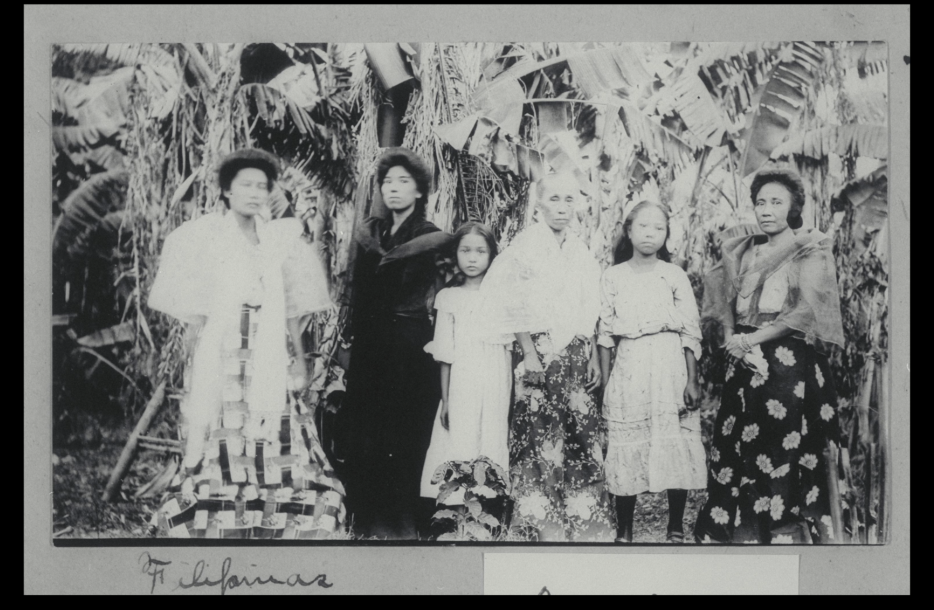Unsettling Landscape: Exploring Southeast Asian Women Filmmakers’ Visionary Perspectives

Photo from Shireen Seno’s film To Pick a Flower (2021).
By Associate Professor Jasmine Nadua Trice, UCLA Cinema and Media Studies
On January 27, CSW|Streisand Center will join the UCLA Film & Television Archive for the film program, Unsettling Landscape: Experimental Films by Southeast Asian Women Filmmakers. Showcasing a collection of recent experimental works by Southeast Asian women filmmakers, Unsettling Landscape focuses on short films and videos that critically engage with questions of land, landscape and the myriad forms of mediation that have been used to capture their image. Like painting and the diorama, the camera has been a tool of colonial authority, historical narrative, and scientific knowledge production, laying the groundwork for unfettered development projects and extractive capitalism. Capturing an image of land through mediation can be an act of complicity, binding it and rendering it legible as scenery, property and territory. Reflexively engaging with such practices of mediation, these works suggest that the moving image also allows space to refuse these legacies.
Unearthing the deep time of tectonic shifts and Animist belief systems, unraveling statist development narratives and unlearning colonial ways of knowing, these films unsettle the complex relations between lens and land, offering new possibilities for spatial transformation on screen. In Anglo-European art histories, landscape is a distinctly visual concept, suggesting a fixed and distanced viewing position, tied to colonial projects of surveillance, cartography, and dispossession. To unsettle landscape is to question this model and its ties to colonial modernities, creating a more dynamic, reciprocal, multisensorial form of relation between viewer and environment. Filmmakers in the region have been concerned with cinema and the environment for the past several years. Various curatorial and film programs have engaged with these ideas, among them Graiwoot Chulphongsathorn’s Screening the Forest (2018), May Adadol Ingawanij’s Animist Apparatus (2019), Patrick Campos’s Cinematic Counter-cartographies of Southeast Asia (2021) and Inland, Island (2022), and Philippa Lovatt and Graiwoot Chulphongsathorn’s Im/material Worlds (2022). Unsettling Landscape brings these ongoing conversations to Los Angeles, focusing in particular on women filmmakers.
Much of this work plays with the tools used in dominant historical narratives, such as photography and filmmaking, as well as the spaces where those records circulate, such as museums and galleries. Shireen Seno’s To Pick a Flower (2021) uses images from the American colonial archive to rethink histories of imperial extraction. Tracking these archival traces across the archipelago, the video essay re-scales imperial-capitalist knowledge systems, moving from images of women with houseplants to industrial lumber yards and imperial, botanical classification. The filmmaker’s own voice-over conjures the heady, affective relations between humans and their environments, even in the midst of rationalized industrial conquest. Filmmaker Nguyễn Trinh Thi describes landscapes as quiet witnesses to history. Moving through a series of still photos culled from a newspaper archive, the video portrays witnesses to newsworthy events framed across a series of landscapes, pointing to the forests and buildings around them: “There.” Meanwhile, Otty Widasari’s Fiksi (Fiction) presents a subjective view of historical narrative, de-emphasizing legibility and transparency. The film is composed of images of dioramas at Indonesia’s National Museum.
Other films contend with image-making and travel. Collectively-made, observational documentary The Harbor was produced through a collaboration between Akumassa, a program within Jakarta-based film collective Forum Lenteng, and Pasirputih, an organization that grew out of a 2008 Akumassa workshop. Collectively shot in the North Lombok town of Bangsal, a small village that serves the gateway to the Gili Islands. The islands are a major tourism destination, an industry that has caused considerable environmental damage. The collective gaze of area residents captures the incoming boats that facilitate the area’s economies. If touristic images depict the islands’ shorelines as “unspoiled” leisure spaces, The Harbor reveals them as everyday spaces of labor. In Danech San’s A Million Years, a young woman leaves Phnom Penh with a friend, settling into a provincial, riverside cafe. Tourist photos give way to an Animist tale about the construction of a dam. Though the development project is unnamed, the film references projects like the Cheay Areng Dam, a proposed hydropower project that would displace 1500 indigenous Chorng people.
Rendered in digital animation, these references to Animist belief systems take a colorful, nightmarish form in Maria Estela Paiso’s It’s Raining Frogs Outside (Ampangabagat Nin Talakba Ha Likol) (2021). The film is the first short by a woman from the Philippines to play at the Berlin International Film Festival, as well as the first film in the Sambal language of Zambales, the coastal city where the film was made and Paiso’s home. Its cacophony of digital images portrays the inner turmoil of Maya, a young woman whose domestic isolation leads to a monstrous, plastic transformation. Oversaturated landscapes, blossoms, insects and the titular rainfall portray the chaos leading us to the world’s end.
The program’s final two films are works of metacinema, reflecting the close working relationship between the two women who made them. A meditative work of docufiction, Pom Bunsermvicha’s Lemongrass Girl (2021) was made on the set of director Anocha Suwichakornpong’s feature film, Come Here. The film follows a common practice on set: a young woman in a low-level production position is tasked with burying lemongrass on the location, in order to prevent rainfall that might disrupt the shoot. The program closes with Anocha Suwichakornpong’s self-reflexive The Line (2020), which portrays the making of an experimental work about the Mekong River. A Bangkok artist shares her perception of Animism with gallery visitors, her film-within-a-film portraying colorful, digitally-manipulated images of the riverfront environment. Meanwhile, the mundane, institutional workings of the gallery workplace unfold.

